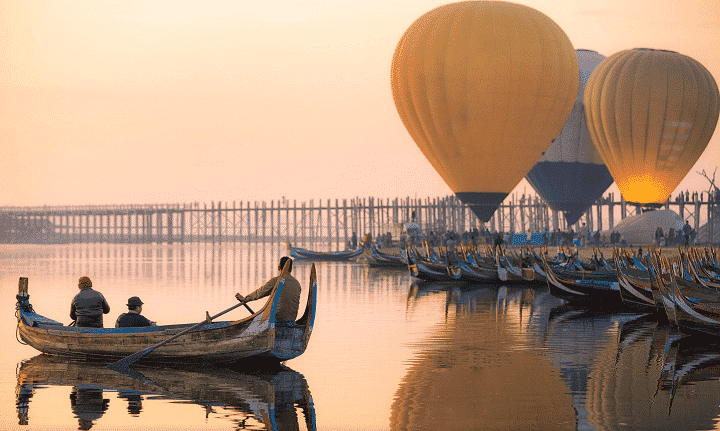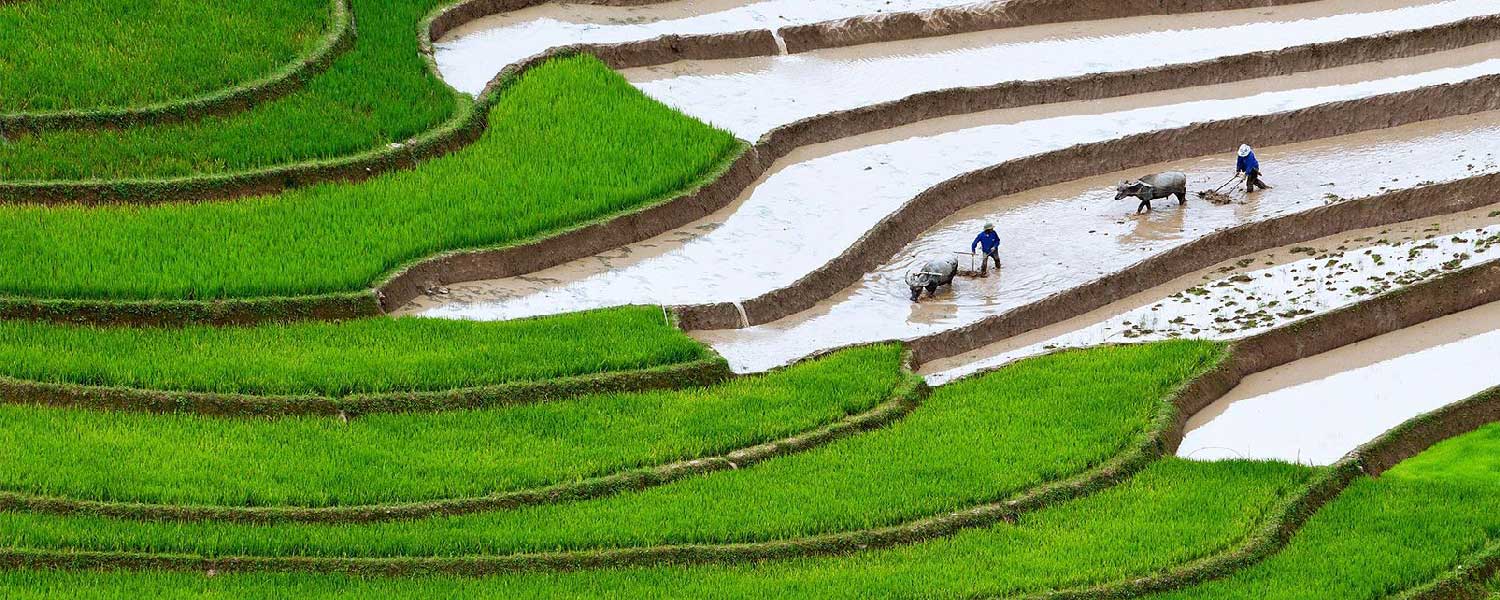SAPA VIETNAM: BEST TRAVEL GUIDE &THINGS TO DO
Sapa Vietnam was choose as a hill station by the French in 1922, Sapa is the one place in the northwest where tourism is booming like never before. It’s now firmly on the European and North American package-tour circuit, and well-equipped trekkers are a common sight around town.
The town is orientated to make the most of the spectacular views emerging on clear days. It overlooks a plunging valley of cascading rice terraces, trekking routes, colorful markets and with mountains towering above on all sides. Views of Sapa offers an epic scenery that are often subdued by thick mist rolling across the peaks, but even if it’s cloudy, Sapa Vietnam is still a fascinating destination, especially when local hill-tribe people fill the town with colour.
The town’s French colonial villas fell into disrepair during successive wars with the French, Americans and Chinese, but following the advent of tourism, Sapa has experienced a renaissance like nowhere else in northern Vietnam. The downside is not anymore where to stay since hotel building is booming, and because height restrictions are rarely enforced, the Sapa skyline is changing for the worse, or for the best, whatever your guide says…
Inherent in this prosperity is cultural change for visiting hill-tribes of Sapa region. The H’mong people are very canny traders, may urging you to buy handicrafts and trinkets. Many have had little formal education, yet all the youngsters have a good command of English, French and a handful of other languages. Voilà
| Experience the Real Vietnam on an Adventure Tour. Book Today, Explore Tomorrow! Book & Travel With Confidence Today with Best Vietnam Tours & Package Trips |
Introducing Sapa Vietnam: When to go & weather
The Queen of the all Vietnam’s mountains, Sapa sits regally overlooking a beautiful valley, lofty mountains towering over the town on all sides. Welcome to the destination in northwest Vietnam, gateway to another world of mysterious minority cultures and luscious landscapes. The spectacular scenery that surrounds Sapa includes cascading rice terraces that spill down the mountains like a patchwork quilt. The mountains are often shrouded in mist that rolls back and forth along the peaks, offering tantalizing glimpses of what lies in wait on a clear day.
Another inconvenience that will not change is the weather of Sapa. If you visit off-season, don’t forget your winter woollies. Not only is it cold (like 0°C), but winter brings fog and drizzle over the whole region. The chilly climate does have its advantages, however. The area boasts temperate-zone fruit trees bearing peaches and plums, and gardens for raising medicinal herbs.
The dry season in Sapa lasts from around January to June. January and February are the coldest (and foggiest) months so prepare if you’re traveling in that time. From March to May the weather is often excellent and its considered as best time to visit Sapa, the summer is warm despite the rains between June and August. The window from September to mid-December is a rewarding time to be in Sapa Vietnam, though there is a bit of lingering rain at the start and the temperature dips by December.
If possible, try to visit during the week, when Sapa is less crowded and more intimate. Crowds, tour groups and motorcycle adventurers flock to Sapa for the Saturday market, but a smaller market is held every day. There is plenty to see on weekdays, and there are lots of interesting villages within walking distance of the centre.
Must-see attractions in Sapa Vietnam
Sapa Markets
Hill-tribe people from surrounding villages go to the Sapa market most days to sell handicrafts and ethnic-style clothing. Saturday is the busiest day, and every day the market’s food stalls are popular for breakfast and lunch. The location of the town’s market may change in the next few years.
Sapa would be of considerably less interest without the H’mong and Dzao people and of course the colorful markets that shape the mountainous regions into something more interesting. Markets are usually a great place to see all Sapa has to offer in one place. The billowing red headdresses of the Red Dzao are visible all over markets. The H’mong are more numerous and canny traders. Their villages may look medieval but most will have a modern 4WD, an iPhone and an email address to stay in touch. Traditionally, they were the poorest of the poor, but have rapidly learnt the spirit of free enterprise and nowadays while growing their farms, they are also into tourism related businesses from being trekking tour guide to running local home-stays and much more.
Bay Ha market is long touted as the weekend alternative to Sapa Vietnam, this small highland town doesn’t have the same dramatic location of its more illustrious neighbour, but it is calmer when Saturday comes. It fills up to choking point on Sunday morning, when visitors flood in to meet the Flower H’mong at the famous morning market. Compared with Sapa, tourism is still in its somehow infancy but its improving here and during the week the town has a quite feel. Bac Ha market is a good base to explore the surrounding highlands. Around 900m above sea level, it is noticeably warmer than Sapa. There are 10 Montagnard groups that live around Bac Ha: the colourful Flower H’mong are the most visible, but other groups include Dzao, Giay (Nhang), Han (Hoa), Xa Fang, Lachi, Nung, Phula, Thai and Thulao.
One of Sapa and Bac Ha’s main industries is the manufacture of alcoholic home brews (rice wine, cassava wine and corn liquor). The corn hooch produced by the Flower H’mong is so potent it can ignite! Bac Ha together with Sapa is the only place in Vietnam where you’ll find this particular moonshine; there’s an entire area devoted to it at the Sunday market. Swill some down before deciding whether to buy a buffalo or cow.
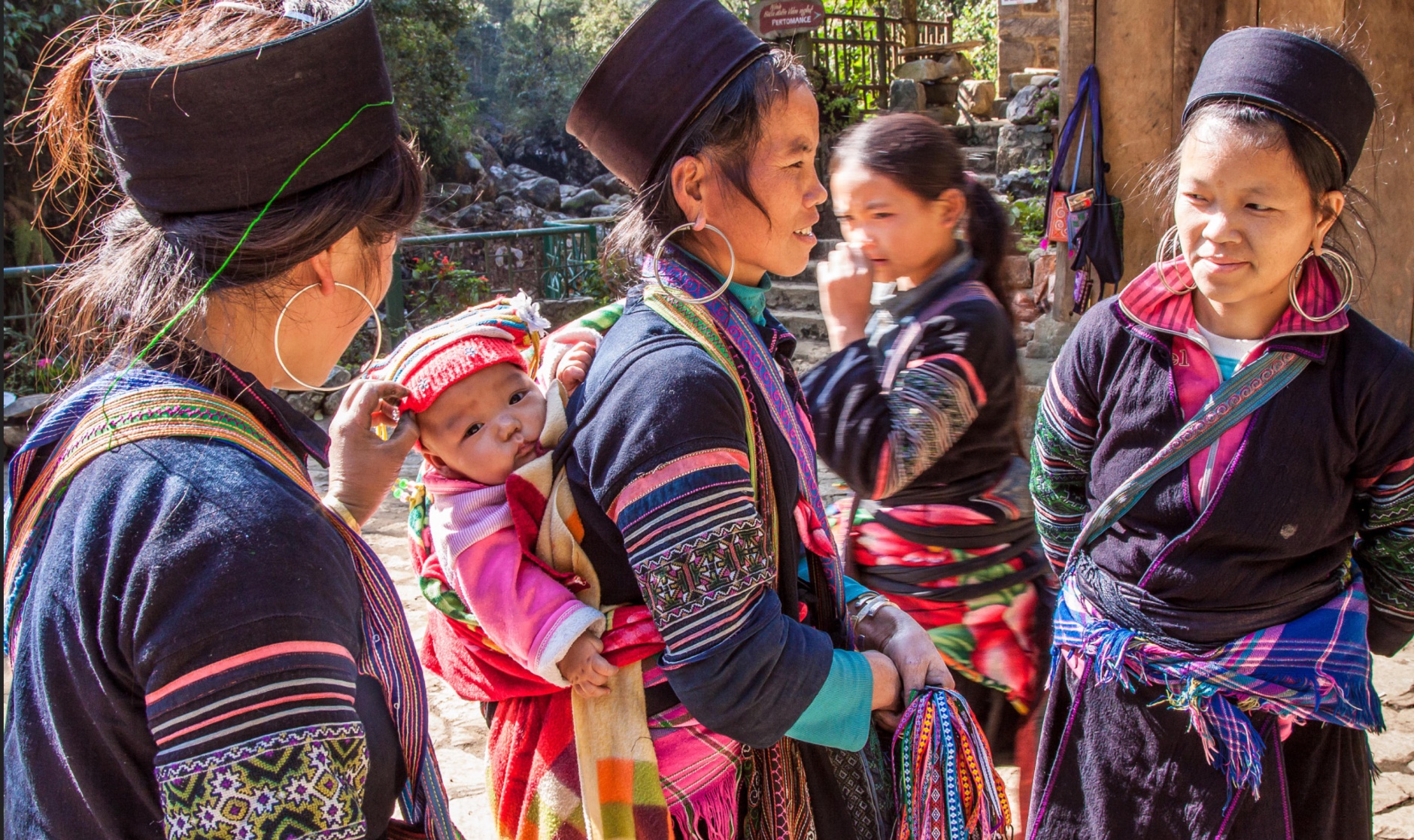
Sapa Local Villages: Best Vietnam’s hiking & trekking
For overnight stays in villages around Sapa Vietnam and longer treks into the mountains, it’s important to hook up with someone who knows the terrain and culture and speaks the language. We recommend using minority guides, as this offers them a means of making a living. The villages and the surrounding landscape are now part of Hoang Lien National Park. The nearest village within walking distance is Cat Cat , 3km south of Sapa. It’s a steep and beautiful hike down, and there are plenty of motorbike taxis for the return uphill journey.
Another popular hike is to Ta Phin village , home to Red Dzao and about 10km from Sapa. Most people, if they aren’t arranging tours in advance, would opt for a motorbike taxi and or rent one to a starting point about 8km from Sapa, and then make a 14km loop through the area, passing through Black H’mong and Red Dzao villages. For spectacular valley views (if the mist and cloud gods relent), there’s a beautiful hike along a high ridge east of Sapa through the Black H’mong settlements of Sa Seng and Hang Da down to the Ta Van River, where you can get transport back to Sapa.

Fansipan Cable Car
There is a cable car from the Sapa center taking tourist to the top of Fansipan. Buy tickets at the office in the town and always expect the busy and crowds specially on weekends. Surrounding Sapa are the Hoang Lien Mountains, dubbed the Tonkinese Alps. These mountains include the often cloud-obscured Fansipan (3143m), Vietnam’s highest peak. Fansipan is accessible year round to sensibly equipped travellers in good shape, but don’t underestimate the challenge. It is very wet, and can be extremely slippery and generally bone feeling cold. Don’t attempt an hike if Sapa’s weather is poor, as limited visibility on Fansipan can be treacherous. However, it was in 2016 when the 6.5km long cable car started across the Muong Hoa Valley and up to near the summit in just 15 minutes.
For those interested in trekking, the summit of Fansipan is 19km from Sapa and can be reached only on foot (If not cable car). The terrain is rough and adverse weather is frequent. The round trip usually takes three days; some experienced hikers do it in two days, but you’ll need to be fit. After walking through hill-tribe villages on the first morning, it’s just forest, mountain vistas and occasional wildlife, including monkeys, mountain goats and birds.
No ropes or technical climbing skills are needed, just endurance. There are a few rudimentary shelters at a couple of base camps en route, but it’s better to be self sufficient with sleeping bag, waterproof tent, food, stove, raincoat or poncho, compass and other miscellaneous survival gear. It’s vital to carry out all your garbage, as some of the camps are now impacted by trash. Hiring a reputable hiking guide is vital, and porters are also recommended.
Weather-wise the best time to hikking to Fansipan summit is from mid-October to mid-December, and in March, when wildflowers are in bloom. We strongly recommend you to book a full tour and follow the trails with a local H’mong tour guide.

Whatever you want your Sapa experience to include, we’ll create with best deal, fully private Sapa Vietnam trip from Hanoi with sleeper bus or train…
Sapa Stone Church
Located in the center of Sapa Vietnam, the small gothic designed stone church was built by the French missionaries some 100 years ago and since then it became an iconic attraction and is still opens for Mass on Sunday and on certain evenings for prayers. it is also interesting that everywhere you go in Sapa, you are ending up here right at the stone church, the construction is fairly small and the stained glass windows are looks impressive. The stone church of Sapa has last been under renovation back in 1995.

O Quy Ho Pass – Scenic viewpoints in Sapa Vietnam
Known as one of the Four Great Passes of the Northern Mountains crossing Sapa Vietnam, O Quy Ho Pass is a favorite destination for motorbike riders. In particular, if you are preparing for a trip to Sapa, O Quy Ho will definitely be the ultimate check-in point that you cannot miss. From the top of the viewpoint, looking at the vast mountains and clouds of forests, you will think you are lost in a fairyland. Because of that, the road to O Quy Ho Sapa seems to never be without the footprints of tourists visiting Vietnam.
The pass is an important road connecting the two provinces of Lao Cai and Lai Chau. The name O Quy Ho is Hmong and is said to originate from a tragic love story of a woodcutter and a beautiful fairy. Because her love failed, she turned into a bird that kept calling “O Quy Ho” earnestly. Since then, people here have used this cry to name the pass.
With an altitude of over 2000m, dangerous winding curves, and a length of up to 50km, O Quy Ho Pass surpasses other famous passes in Northern northern Vietnam such as Ma Pi Leng (20km), Pha Din (32km long) or Khau Pha (40km). If you have a fair motorbike riding skill, we do recommend you to rent a motorbike in Sapa and drive to cross the O Huy Ho pass.
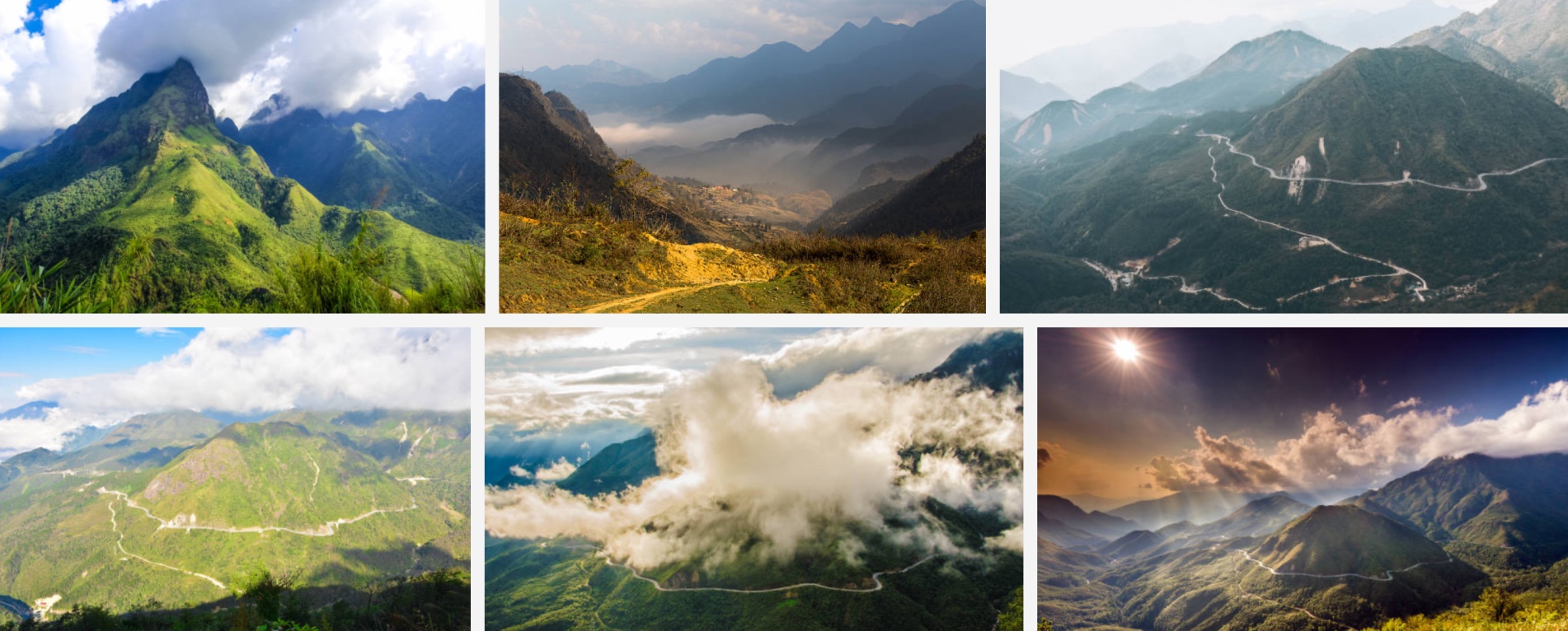
Sapa Thac Bac Waterfall (Silver Falls)
Sapa known for its stunning landscapes with several beautiful waterfalls, and it’s possible that a “Silver Waterfall” might be one of them. About 15km from Sapa town towards Lai Chau and Dien Bien province, Silver Waterfall is located in San Xa Ho commune. The road to the waterfall is quite scenic and the riding with motorbike would be very ideal.
The 200 meter high silver waterfall could be reached by an easy hike, or just taking the stair to climb. The surrounding rocks and greenery add to the scenic beauty, providing an excellent opportunity for photography and relaxation.

How to get to Sapa Vietnam?
There are several ways to get to Sapa, people opt for night bus and or trains, motorbike rides or rent a private car. Renting a private car with a driver is a popular choice for a comfortable and hassle-free travel to Sapa Vietnam. Most travelers first get to Hanoi and then from book one of the several options in order to get to Sapa.
There’s no train line directly to Sapa, but very regular services from Hanoi to Lao Cai and then take another 50KM bus ride to Sapa. The train trip between Lao Cai (gateway station to Sapa) and Hanoi has become much more comfortable with the advent of a soft-sleeper class and private rail carriages hitching a ride on the main train. Currently, a sleeper ticket between Hanoi and Sapa can be booked only through hotels and agencies in Sapa, but in Hanoi you can book directly at the station.
The day train leaves Lao Cai at 10.20am, while two night trains depart 8.35pm and 9.15pm, with the later express service including the private carriages. The journey takes about 10 hours. From Hanoi the all-stations day train departs at 6.15am and the night trains depart at 9.20pm and 10pm respectively. The train tickers from Hanoi-Sapa cost between 700K VND to 1500K VND (based on types of cabin and train class)
Ha Noi – Sapa Sleeper Bus are run frequently, in Hanoi you can easily book your ticket through your hotel and or get to the bus station (My Dinh Bus Station in Hanoi) and purchase your ticket directly. There are several services daily. We recommend you to book your ticker in advance if you’re traveling to Sapa in public holidays and or weekends. In addition, in Hanoi, you can get your Sapa bus ticket anywhere in Hanoi’s old quarter. The sleeper busses are very comfortable, with 185cm long bed, fair mattress and blanket and pillow. The journey is around 7 hours and busses are equipped with WIFI (Even though they don’t work efficiently). The ticket price is from 450k VND to 550K VND depending on traveling time and bus company.
Other services are 16 seat mini-van which are super fast and comfortable, running like a dream. Book ticket anywhere in Hanoi old quarter and or the bus stations.

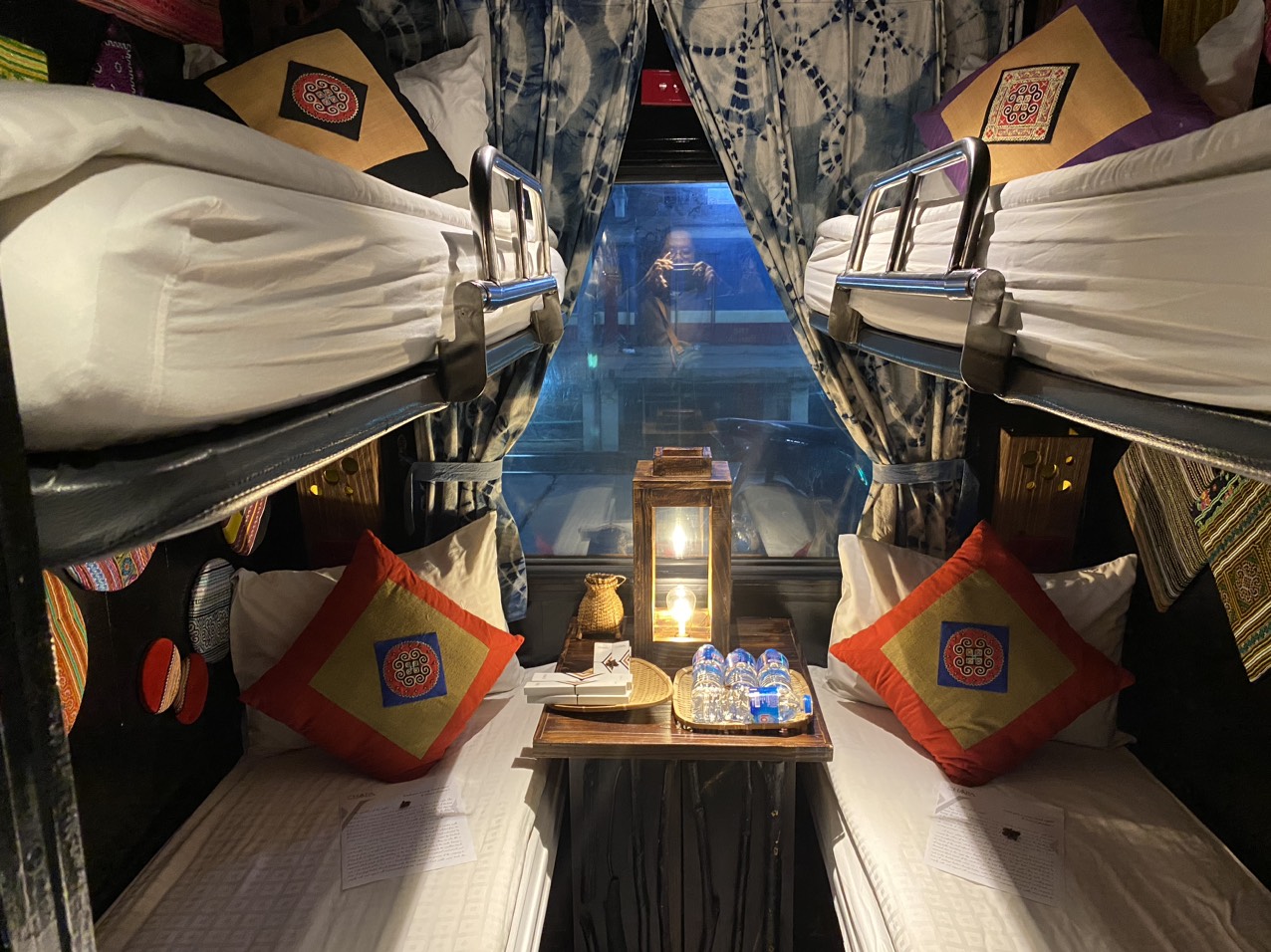
What to eat in Sapa Vietnam?
The Hmong cuisine and Sapa delicacy is fairly different form other foods you eat in Vietnam. There are famous Sapa foods that makes it hard for tourists to refuse. Many travelers and even locals are wondering why Sapa’s Salmon is so famous? The first dish to be mentioned is the salmon broth. Regardless of winter or summer, broth dishes are always in the menu of any restaurant in Sapa.
Sapa’s food is famous for its grilled dishes, almost anything can be barbecues and grilled in local way. From sweet potatoes, vegetables wrapped in meat & mushrooms, steamy rice, chicken legs, cheap nuts, fish balls and also eggs. The fresh misty climate Sapa Vietnam at night at any time is the reason why the coal is always burning
Some of the local foods we can name for you to try:
Thang Co, stewed horse meat slow cooked with bones and organs.
Salmon hotpot sturgeon, as mentioned above, locally served with lots of fresh veggies picked from the mountains served with any sort of noodles and local herbs. Always a good choice for misty weather os Sapa.
Pork sausages; locally made from ground pork mixed with herbs, garlic and spices.
Black chicken, yes, the meat is fair dark, slow cooked with herbs and local wines sometimes, served with steak rice and or noodles and lots of veggies.

Where to stay in Sapa?
Thanks for its rapid tourism developments. Sapa is now a tourism hotspot featuring a large number of accommodations from locally Hmong owned homestay in the middle of nature to the luxury hotels across the valley overlooking the mountains. If its your first time visiting Sapa Vietnam, we recommend to stay in the town where you can find handful of hotels ranging from USD10 to 100 and more per nights with swimming pools and better facilities. The midrange hotels comes handy in 1-3 star hotels. Only the higher class accommodations are offering breakfast with the room rate. A lot of visitors including flocks of locals are only preferred to book with homestay since they feel closer to the local culture.
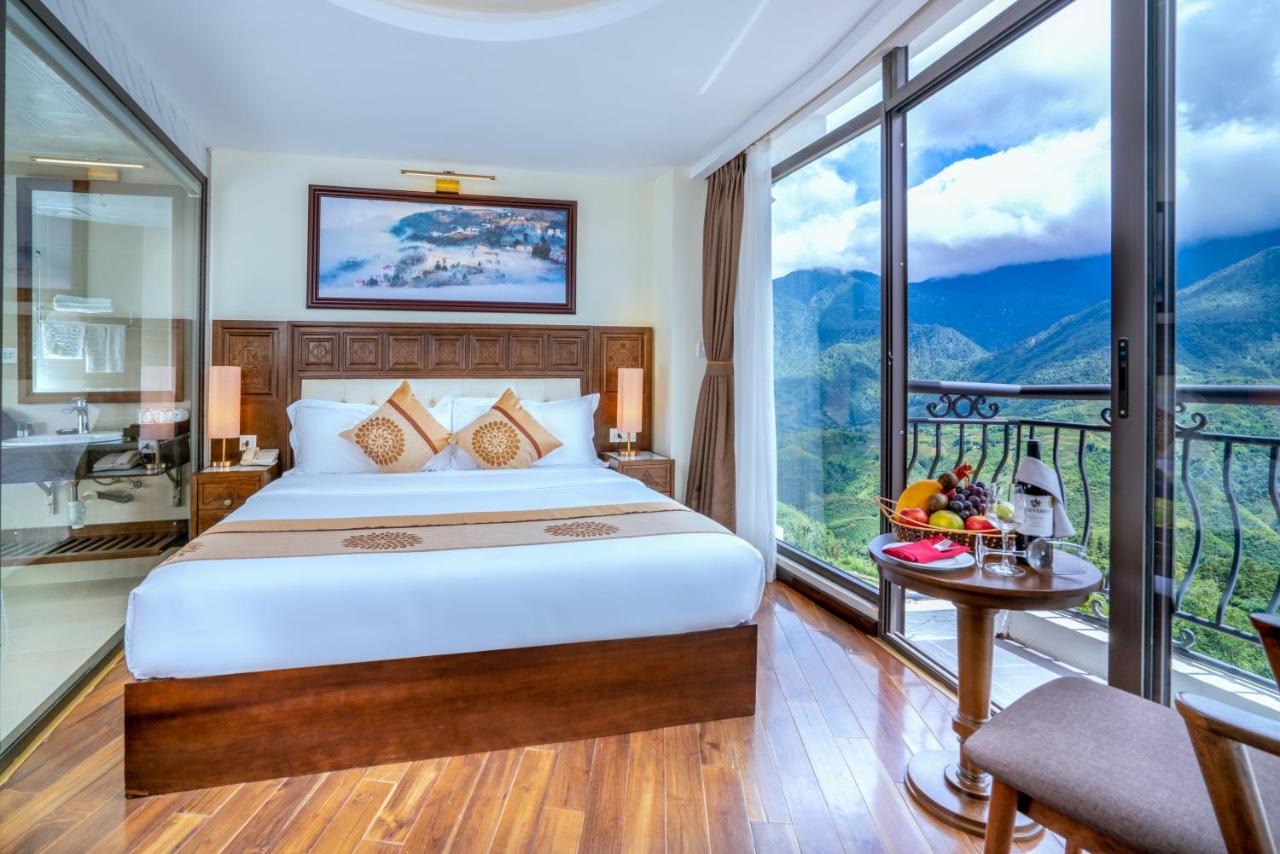
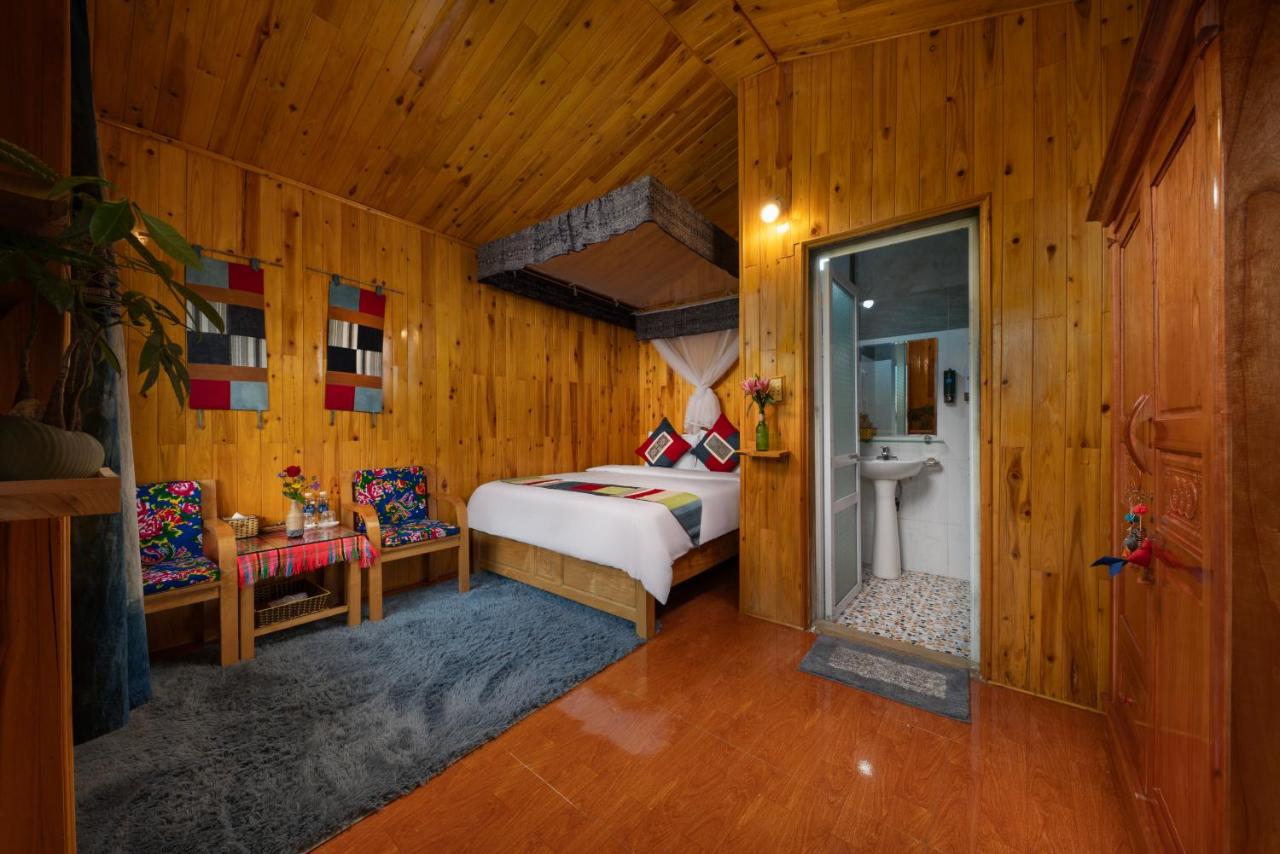
First timer guide to visit Sapa Vietnam: Located at an altitude of 1600m (6112ft) in the remote North-Western Highlands, Sapa entrances most visitors and went into a long decline from which it has been long recovered converted into a tourism hotspot. More and more travellers are booking to stay in for the climate (cold in winter) and to visit the hill tribes (mostly Hmong, Dao and Kinh people) who live in the area. The Saturday market is the best place to buy handicrafts. Accommodation are expanded and are not in short anymore. Just 9km (5.5mi) from Sapa is Fansipan (3143m/10,309ft), which is Vietnam’s highest mountain. A hike to the top and back takes about four days, Cable car made it easy to visit at anytime.
Copyright 2013-2017 Vietnamese Private Tours Ltd With Vietnam Luxury Travel





